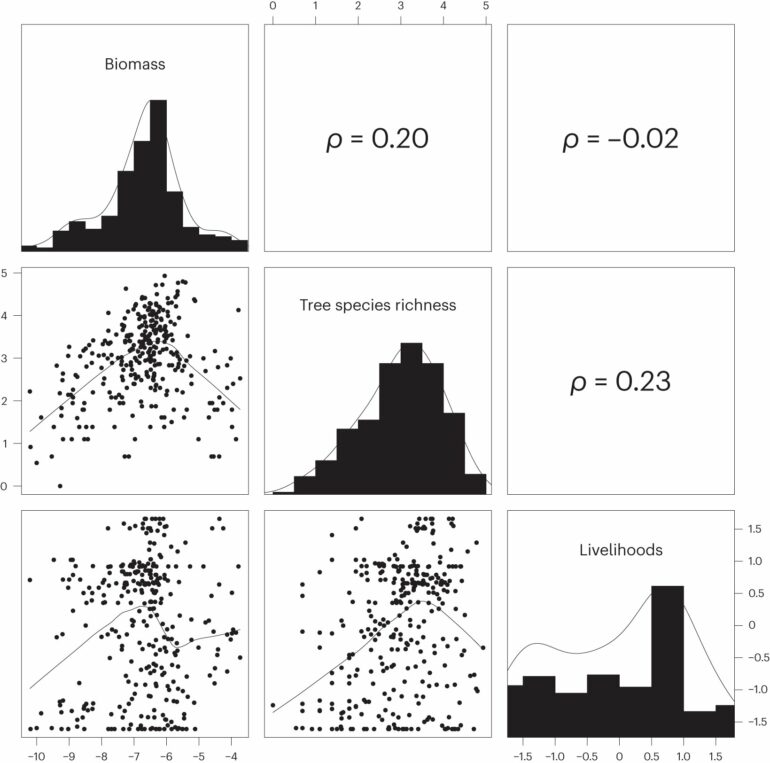A new study published Nov. 23 in Nature Climate Change reveals that forests formally managed by Indigenous and local communities have improved outcomes for carbon, biodiversity and livelihoods, simultaneously addressing three goals sought by global proposals for “nature-based solutions” that will be discussed at COP28 in Dubai.
Led by Harry Fischer from the Swedish University of Agricultural Sciences, the research team sheds light on a solution for addressing the twin crises of climate change and biodiversity loss.
Using data collected through the International Forestry Resources and Institutions (IFRI) research network, Fischer and his co-authors compared 314 forest patches used and managed by local people in 15 tropical countries. Their goal was to identify what the best examples had in common. For each site they analyzed tree species richness (a proxy for biodiversity), carbon sequestered in above-ground biomass, and rural livelihood contributions.
Policies aimed at conserving forests and restoring degraded and deforested lands include proposals for nature-based solutions that can mitigate climate change and ambitious targets for a global expansion of protected areas.
Such policies frequently target rural tropical landscapes, but many forests in these contexts also have a substantial human presence, including an estimated 1.8 billion people that live on lands needed to sustain key biodiversity goals globally. In these contexts, forest are integral to rural livelihoods, incomes and well-being, and they often play a critical role in helping households respond to climate change stressors.
Interestingly, the researchers did not find positive associations with another common forest restoration strategy: tree planting.
“This is likely because rural and Indigenous peoples often rely significantly on forests for their well-being,” Fischer said. “They use forests for food, income, and culture, and many have been managing local forests sustainably for a very long time.
“Compared to government officials, they often have better knowledge of local contexts, and they are better able to devise locally appropriate use rules. Policies that give local people power over forest management help to ensure that they have the opportunity to do what they already do well.”
The authors of the new paper stress their work does not prove cause and that diverse socioeconomic and policy factors matter.
“But when we see this association across a sample of forests in 15 tropical countries in South America, Africa and Asia, it is powerful. Something is happening there,” Fischer said. “Our findings suggest that governance reforms can play a significant role in supporting both human and environmental goals in forested rural landscapes of the Global South.”
“As global investments in restoration grow, one of the best things we can do is to ensure that Indigenous and local communities have formal rights and substantive influence on management decisions,” Fischer said. “General calls for ‘participation’ in project planning are not enough. There is a need for more empowered local governance, and a substantive role for communities in formulating management rules.”
More information:
Harry W. Fischer et al, Community forest governance and synergies among carbon, biodiversity and livelihoods, Nature Climate Change (2023). DOI: 10.1038/s41558-023-01863-6
Provided by
Swedish University of Agricultural Sciences (SLU)
Citation:
Locally managed tropical forest commons provide multiple benefits, study finds (2023, November 24)



